Creamy, mildly sweet, spicy, garlicky peanut chutney is a great alternative to the regular coconut coriander chutney. Easy to make and ready in minutes, this versatile accompaniment tastes great with idli, dosa, and vada. It is also a delicious spread and can be used in sandwiches and wraps.

Why you will love this recipe?
- This peanut chutney is creamy, spicy, and mildly sweet.
- It is versatile and can be paired with South Indian breakfast dishes as well as lunch/dinner menus.
- Peanut chutney is also great as a spread for wraps and sandwiches or a dip with finger foods.
Ingredients
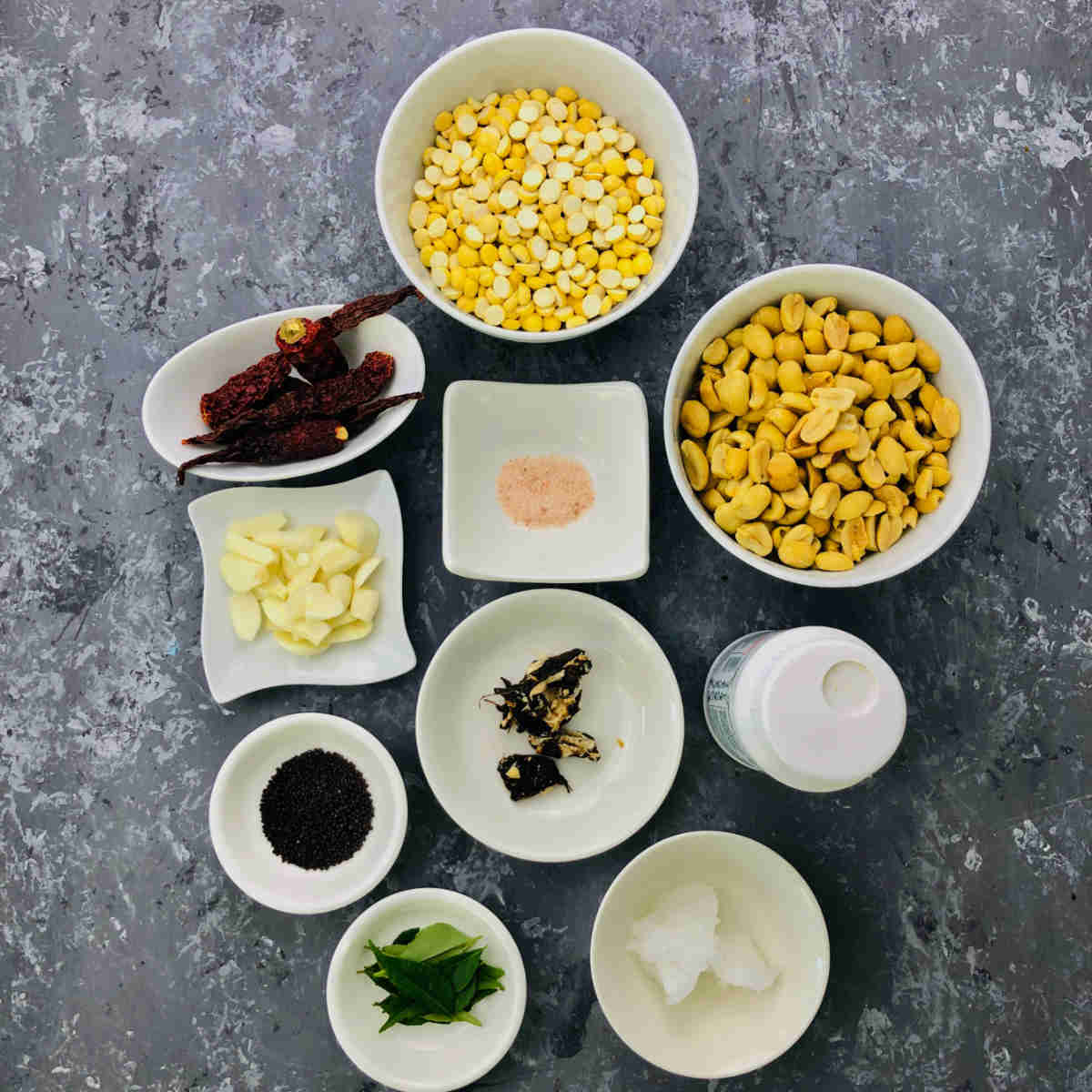
Peanuts: Use dry roasted and deskinned peanuts.
Roasted Bengal gram: This is a common ingredient used in many South Indian chutneys.
Garlic: I use a lot of garlic to make this chutney. I also saute garlic in oil before using it. This step is optional and can be skipped if you prefer using raw garlic.
See the recipe card for full information on ingredients and quantities.
Step-by-step instructions
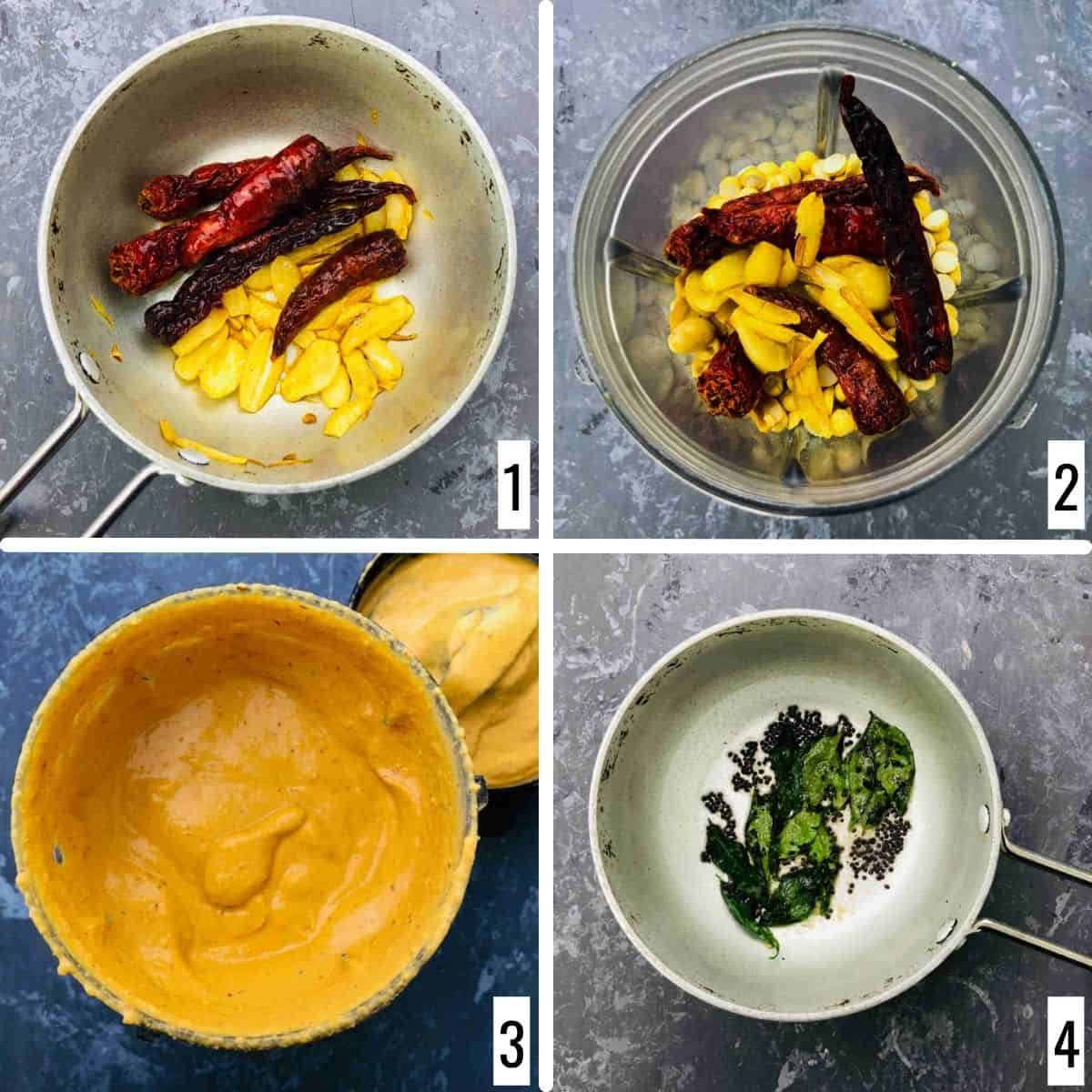
Step 1: Fry garlic and chili until they are golden (image 1). Take garlic, chili, roasted peanut, roasted Bengal gram, tamarind extract, salt, and some water in a blender/mixie jar (image 2). Grind into a smooth paste using a little water (image 3).
Step 2: To prepare the tempering, heat 1 teaspoon oil and add mustard seeds. Once it crackles, add curry leaves and hing (image 4). Pour the tempering onto the chutney and serve.
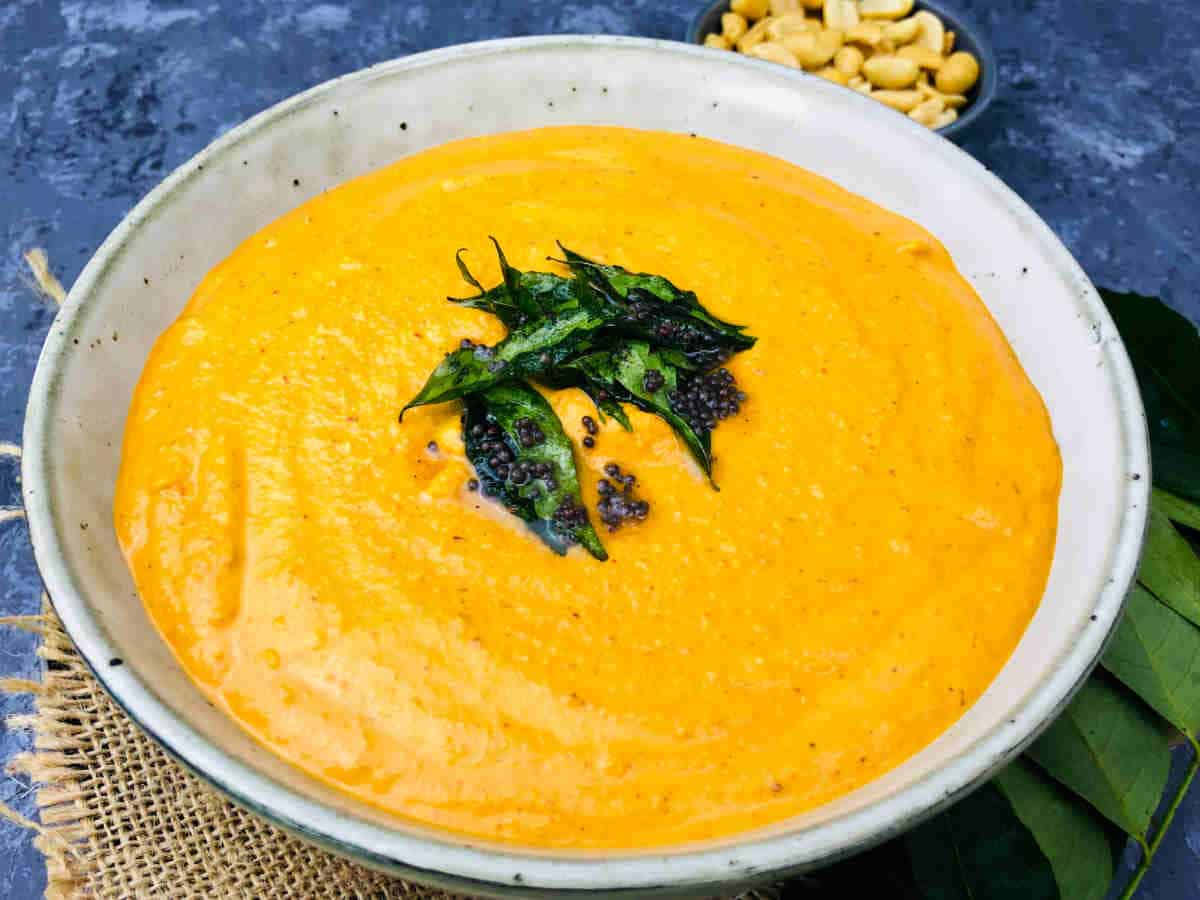
Expert Tips
I use store-bought roasted peanuts. If you have raw peanuts, dry roast them on low heat for 8-10 minutes. Let them cool and then deskin them before using. To deskin roasted peanuts, you can rub them with your fingers. Alternatively, place the peanuts in a muslin cloth, tie all the ends, and rub them well. Open the cloth and pick up the peanuts, leaving behind the skin.
I prefer to fry the garlic and chili before grinding. You may skip this step and use raw garlic and chili.
Tempering (oggarane/tadka/seasoning) is purely optional and can be skipped. I use coconut oil to make the tempering. You may use any cooking oil of your choice.
Recipe FAQs
Use roasted peanuts to make this chutney. If you have raw peanuts, dry roast them on low heat for 8-10 minutes. Let them cool and then deskin them before using. To deskin roasted peanuts, you can rub them with your fingers. Alternatively, place the peanuts in a muslin cloth, tie all the ends, and rub them well. Open the cloth and pick up the peanuts, leaving behind the skin.
Bengal gram is split and deskinned brown chickpea. Dry-roasted Bengal gram is a common ingredient used in South Indian chutneys. This is also known as hurigadle in Kannada. They can be used as-is and don't need any further cooking. Roasted chana is available in most grocery stores in India and in Indian grocery stores outside of India.
If you do not have access to roasted Bengal gram, you may replace it with roasted besan (gram flour/chickpea flour). Make sure you dry roast the besan on low heat for 8-10 minutes until the raw taste goes. Since this chutney is not cooked, the besan has to be roasted well.
Store the peanut chutney in the refrigerator. Since this chutney does not have coconut, it can be stored for a longer period. It should stay good for up to five days.
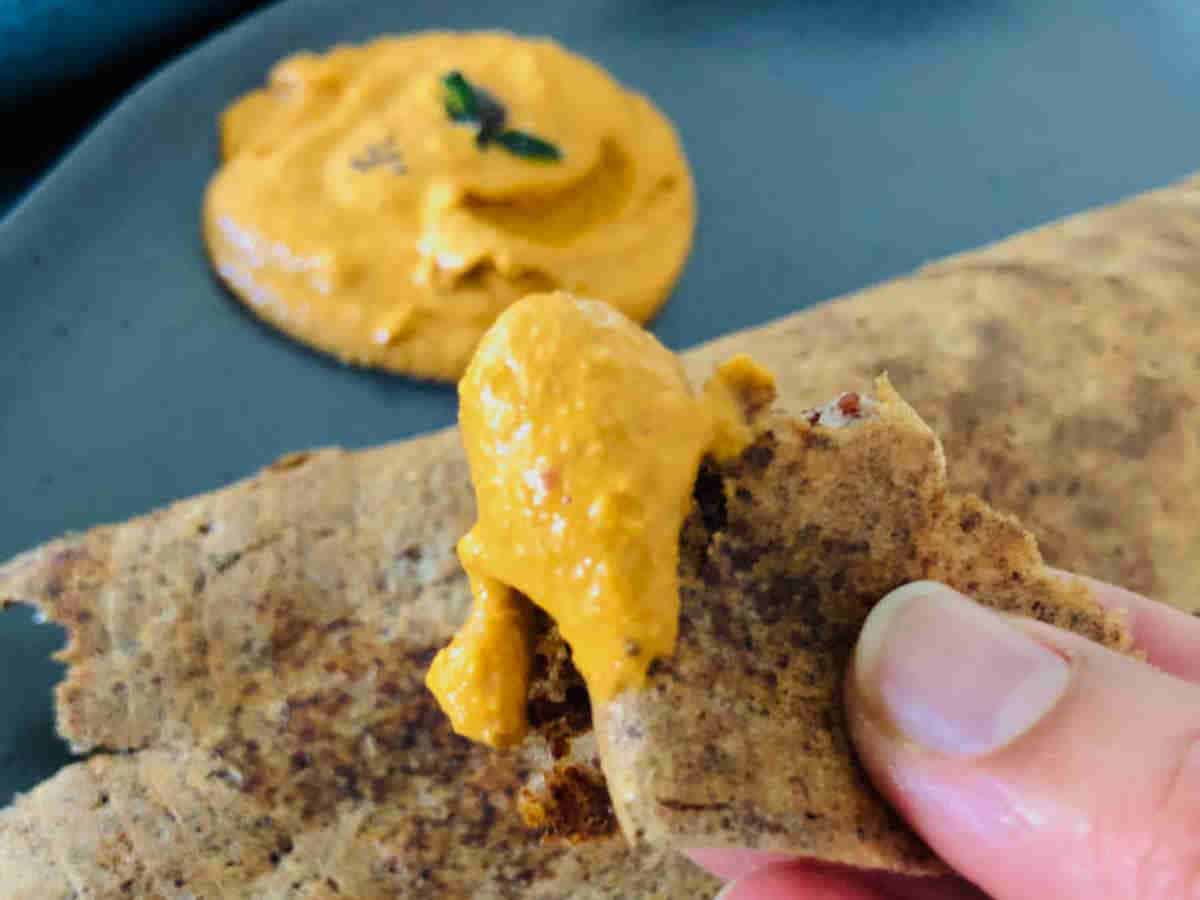
More chutney recipes
If you tried this Peanut Chutney Recipe or any other recipe on my website, please leave a ? star rating and let me know how it went in the ? comments below.
Recipe card
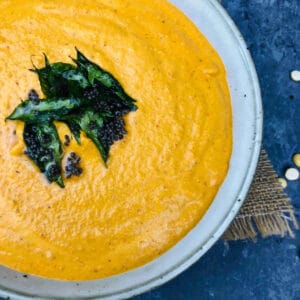
Peanut Chutney
Ingredients
For the chutney:
- 1 cup roasted peanuts
- ½ cup roasted Bengal gram (see notes)
- 1 teaspoon coconut oil
- 7-8 cloves garlic sliced
- 1 tablespoon tamarind
- 5-6 dried red chili or as per taste
- Salt to taste
For the tempering (optional):
- 1 teaspoon coconut oil
- ½ teaspoon mustard seeds
- ½ teaspoon asafoetida hing
- 5-6 curry leaves
Instructions
Making the chutney:
- Soak the tamarind in some warm water for 5-10 minutes. Extract the pulp and discard the remaining part
- Heat a small pan and add 1 teaspoon coconut oil. Add garlic cloves and dried red chili. Saute until they are golden.
- Take off from heat and let it cool.
- Grind them with roasted peanut, roasted Bengal gram, tamarind extract, salt, and some water.
- The chutney is ready to be served at this stage.
To make the tempering - optional:
- To prepare the tempering, heat 1 teaspoon oil and add mustard seeds.
- Once it crackles, add curry leaves and hing. Saute for a few seconds.
- Pour the tempering onto the chutney and serve.

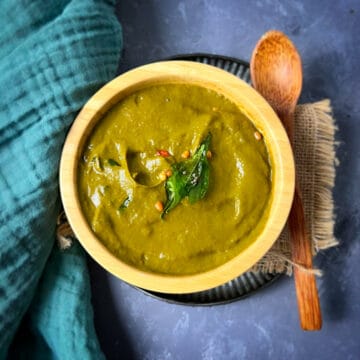
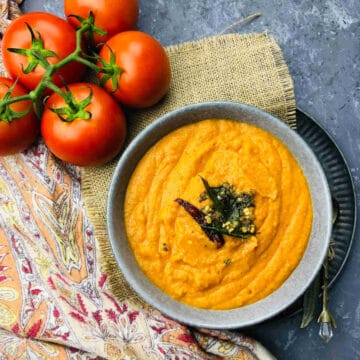
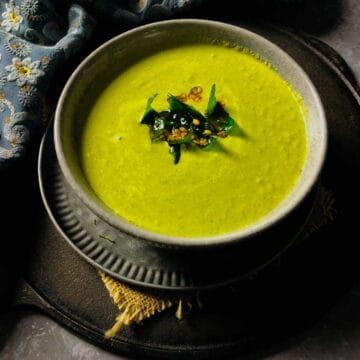
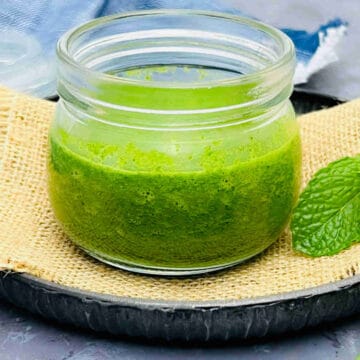
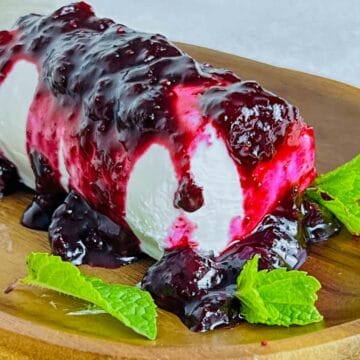
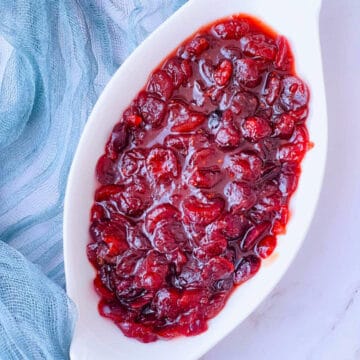
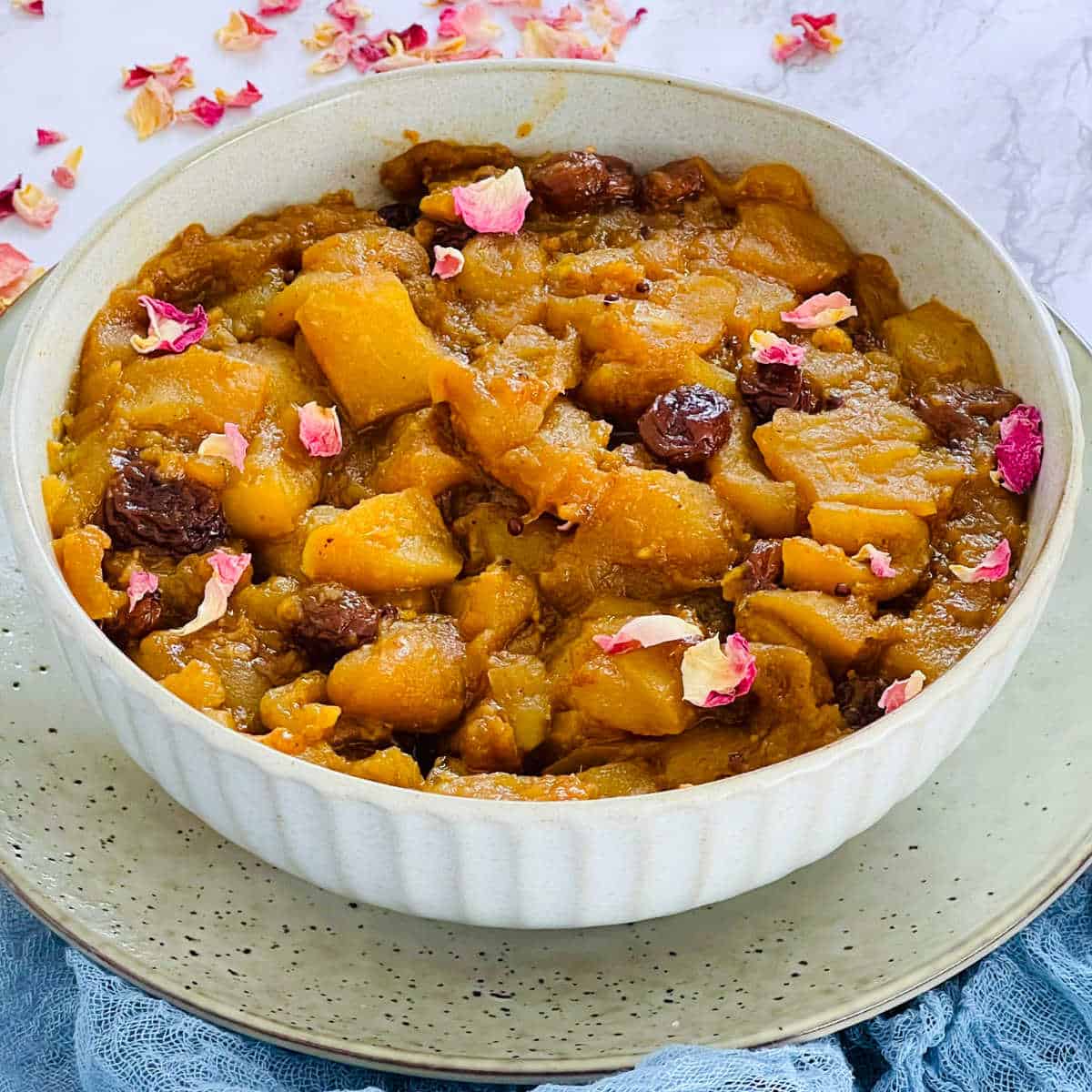
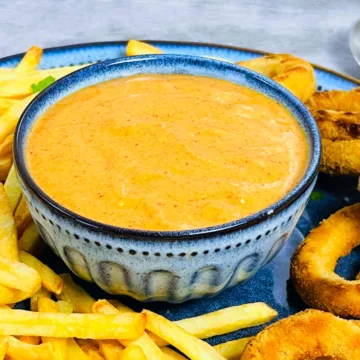
Comments
No Comments